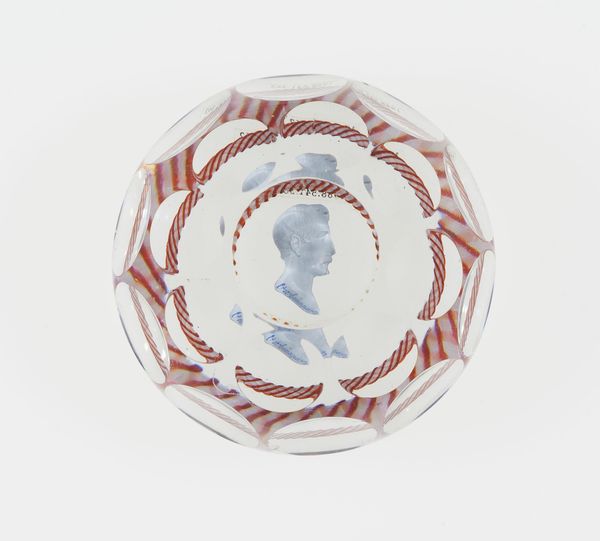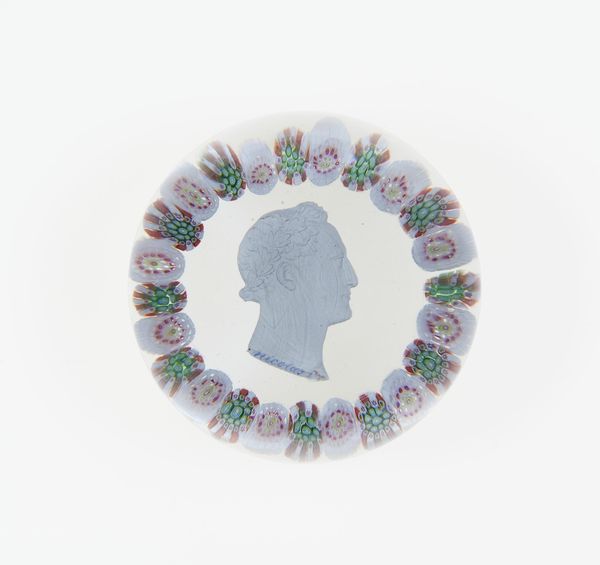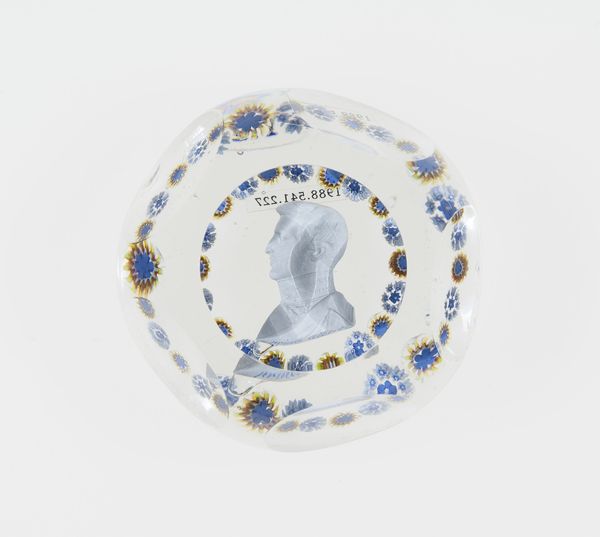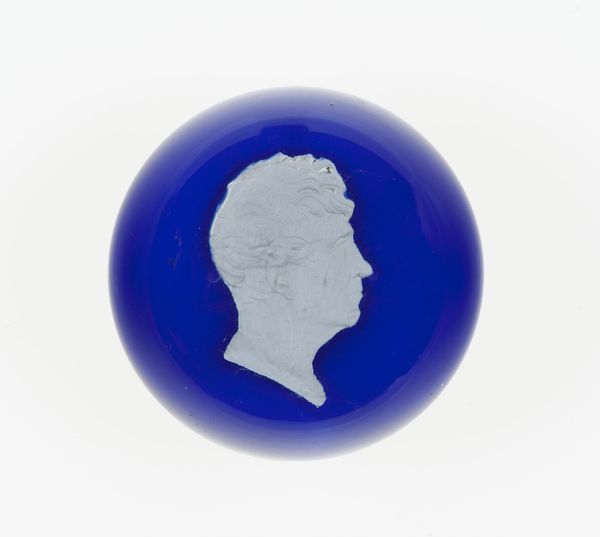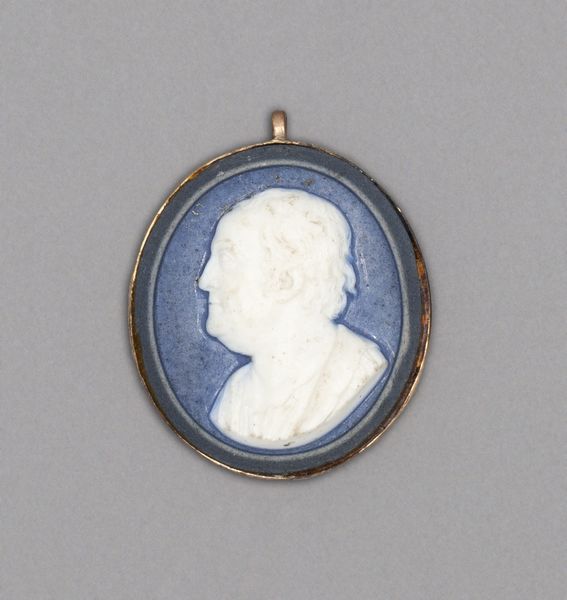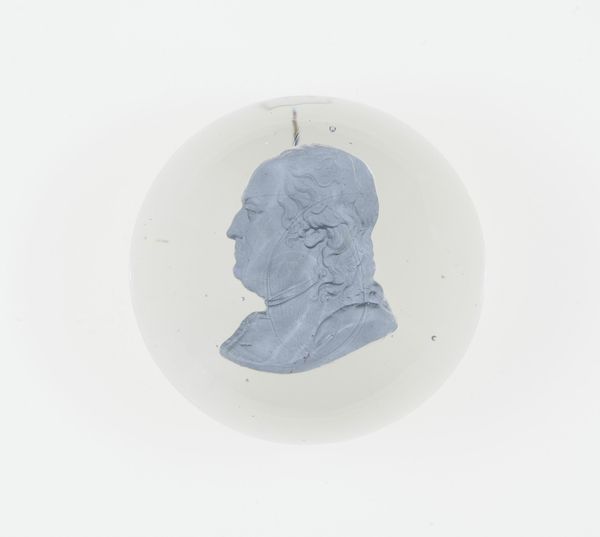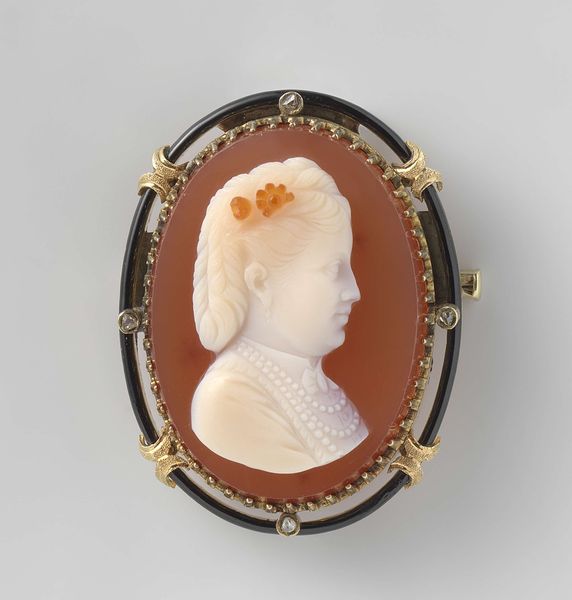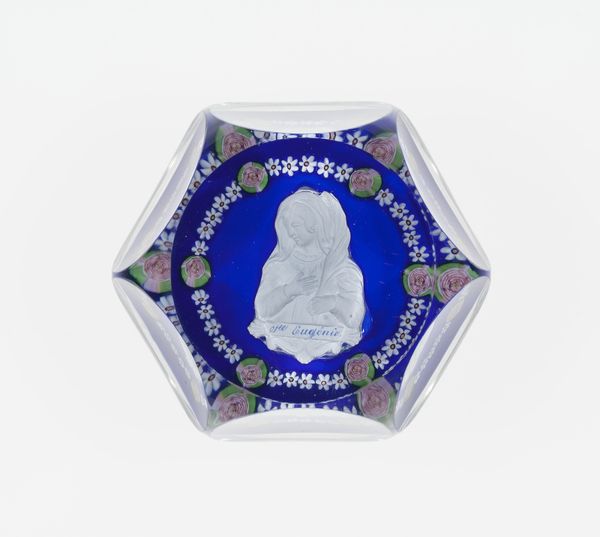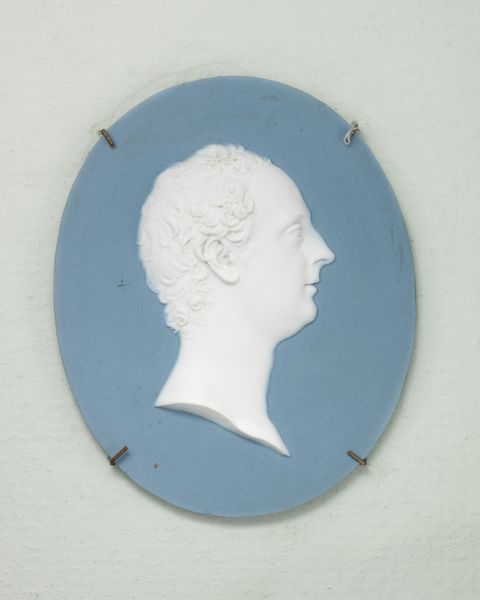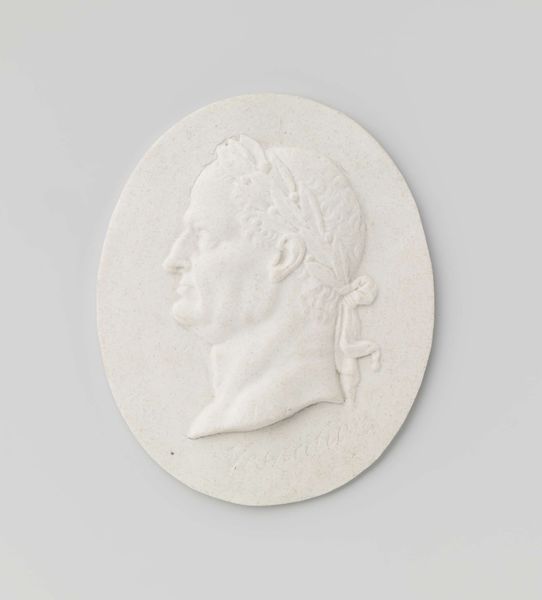
paper, glass
#
portrait
#
paper
#
glass
#
decorative-art
Dimensions: Diam. 7.6 cm (3 in.)
Copyright: Public Domain
Editor: This paperweight, created around the 1840s by the Compagnie de Saint Louis, uses both paper and glass. The pale blue figure in the center immediately strikes me as very formal. How would you interpret this work? Curator: The use of the portrait within the paperweight signifies more than mere decoration. Glass, by its nature, is both fragile and capable of capturing and preserving an image. Encasing a portrait of, likely, Louis-Napoleon within glass elevates him, protects his image, but also renders him somewhat untouchable, preserved as memory. Editor: So, it’s not just decorative, but also symbolic. Curator: Exactly! Consider also the "L. Napoleon" inscription, a subtle yet crucial identifier. How does it connect, visually and psychologically, to the man's ambitions, given that during this period, Napoleon III sought to emulate his uncle and eventually become emperor? Editor: It’s interesting how such a small object carries so much political weight. Curator: The very form speaks volumes. This period was fascinated with miniature portraiture. Why? It brings a leader closer to those governed, quite literally into their hands on the desk. How can an object act as a statement? The paperweight, commonly functional, is now politically and psychologically charged. Editor: I hadn’t thought about the context of his political ambitions affecting how it's perceived. Curator: The past within our grasp. What seems decorative now spoke then with revolution. Now, consider other objects. What historical whispers do you think they hold? Editor: It gives me a whole new way to think about art, and objects from history, in general.
Comments
No comments
Be the first to comment and join the conversation on the ultimate creative platform.
